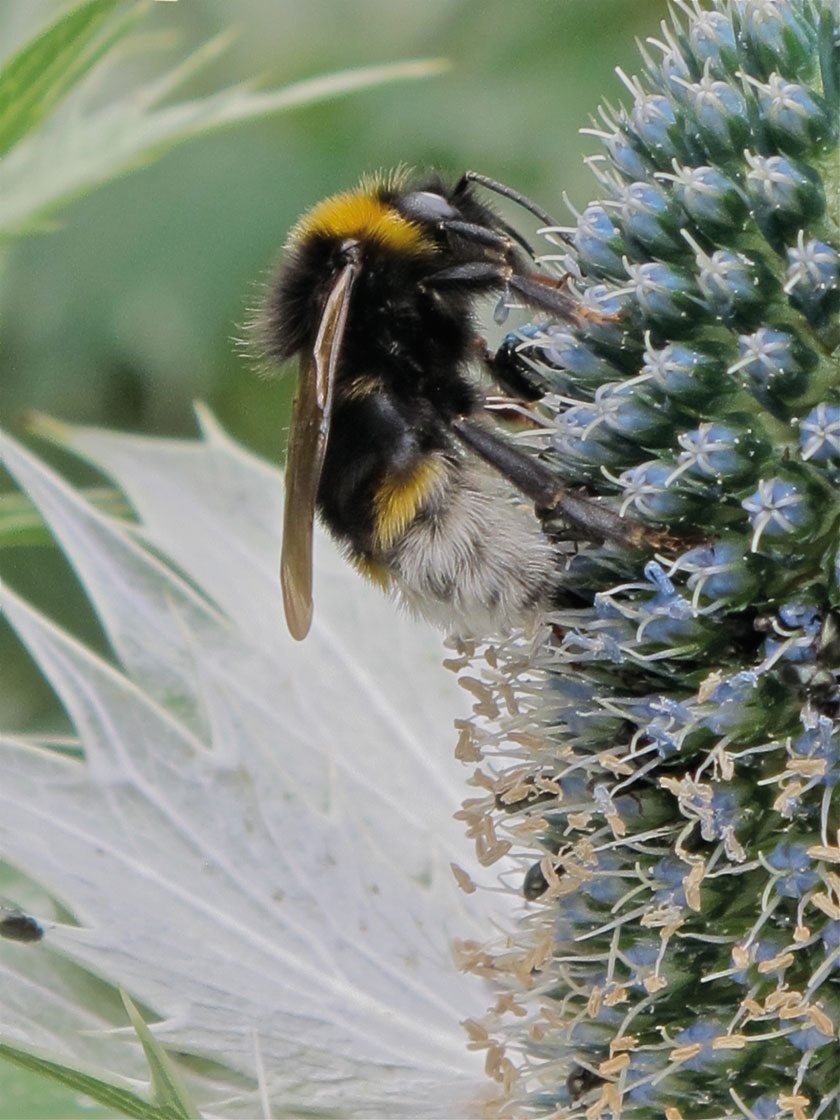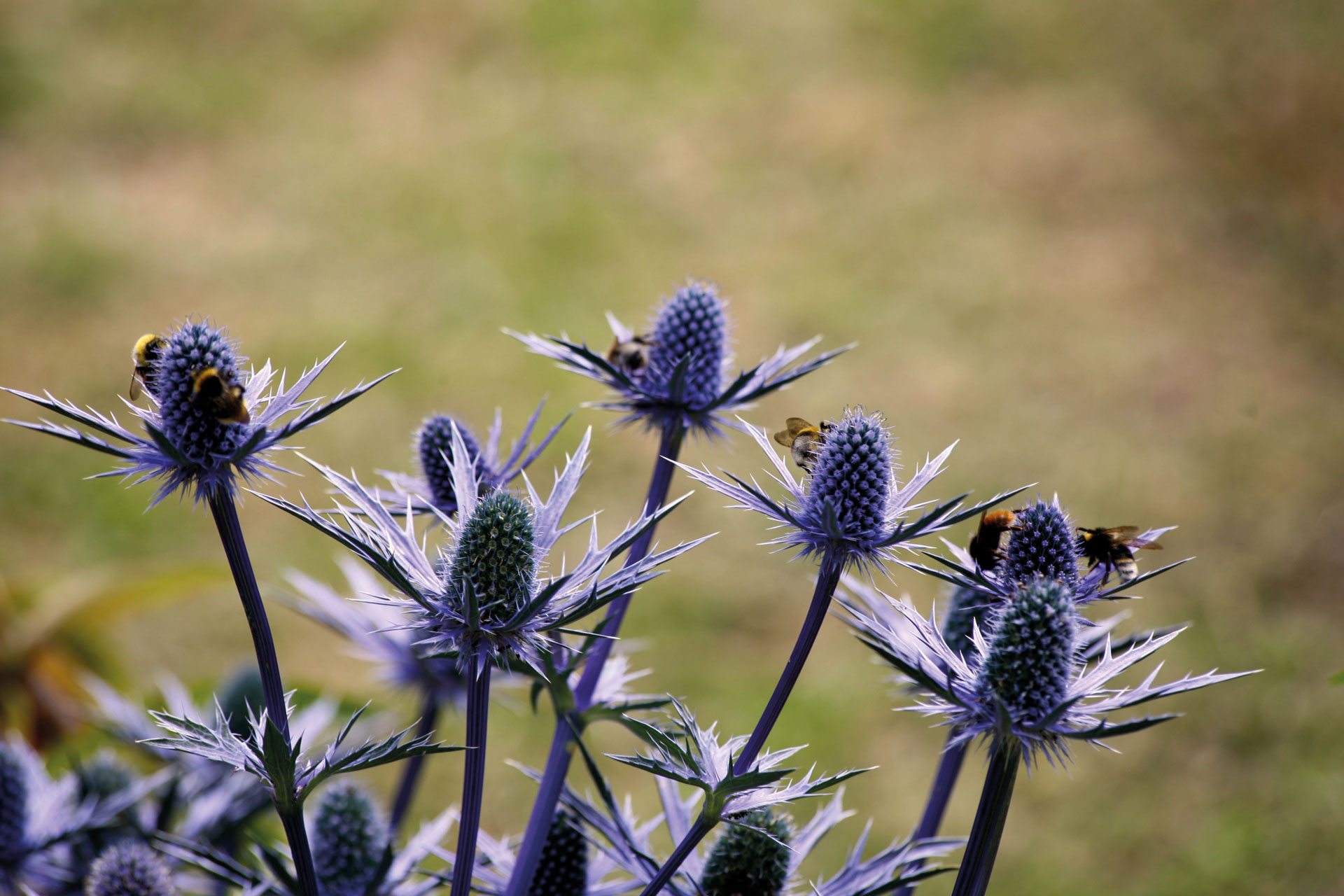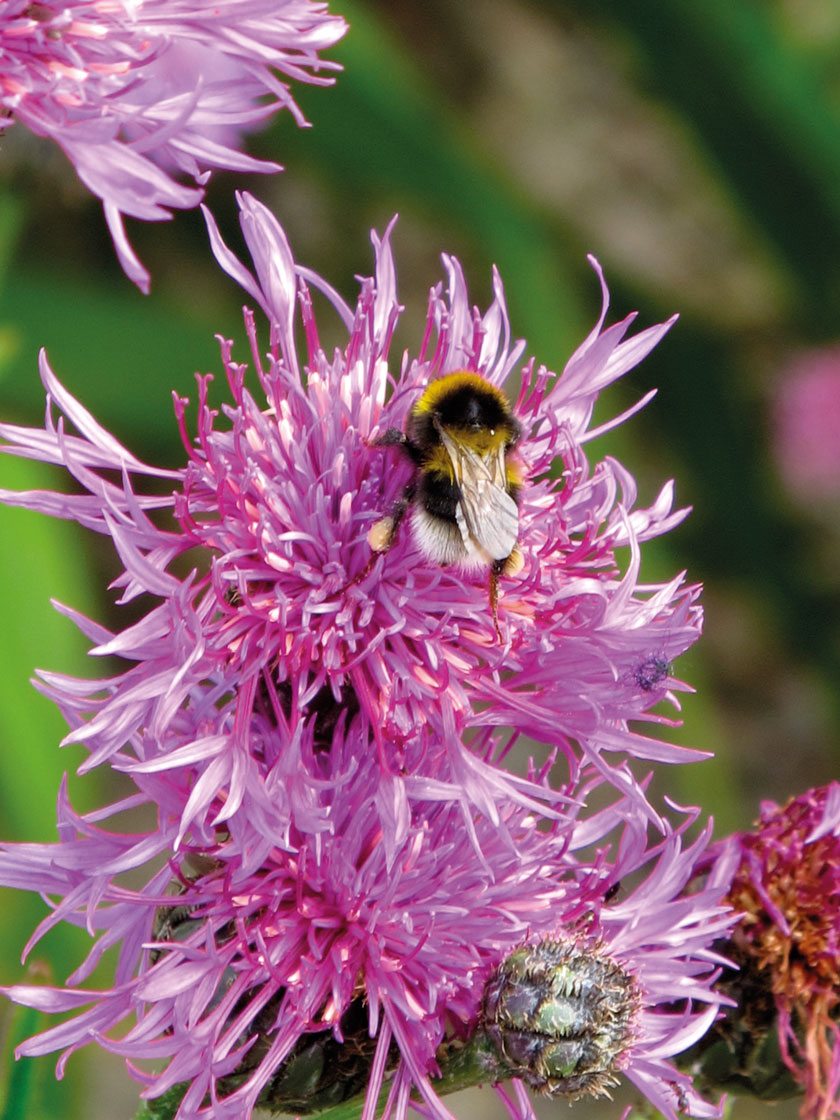10 Early Bee Plants for Your Garden
Create a haven for the bees in your garden
Want to help British bees flourish in your garden? The Living Jigsaw by Val Bourne is a masterclass in natural gardening. See which bee-friendly flowers Val recommends for your own little ‘living jigsaw’.

White Tailed Bumble Bee Eryngium-Giganteum; Photography: Marianne Majerus
Early Bee Plants
Essentials for the first bees, who need emergency supplies of nectar and pollen.
Clematis cirrhosa var. purpurascens ‘Freckles’ AGM
Needs a south-facing wall, like all forms of C. cirrhosa. ‘Freckles’ is the earliest to flower, often in November, with white bells heavily spotted in red. Do not prune.
Helleborus × hybridus (hybrid hellebores)
Appearing from February, with rounded flowers formed by weather-resistant tepals rather than petals. Full of nectar and pollen for the first few weeks and then the tepals remain for two months or so – still looking like flowers.

Bees on Deep Blue Eryngium; Photography: Marianne Majerus
Narcissus ‘W. P. Milner’
Simply bred daffodils, close to wild type, are far more attractive to bees than elaborately bred doubles. The best native is N. pseudonarcissus subsp. pseudonarcissus. ‘W. P. Milner’, a swept-back daffodil in buttermilk and lemon, is an old Backhouse variety from 1884 that has a wild look.
Crocus sieberi subsp. sublimis ‘Tricolor’ AGM
An enduring small crocus – and so many aren’t – with the ability to flower early. Small, goblet-shaped purple, white and egg-yolk-yellow flowers trap warm air, making nectar flow – even when there’s snow on the ground. Any crocus will do, though!
Rosmarinus ‘Miss Jessop’s Upright’ AGM
A very upright, aromatic rosemary with lavenderblue flowers. Give it a warm site, or place it close to a sunny wall, and this will flower with the first crocus. Adored by bees.
Daphne bholua ‘Jacqueline Postill’ AGM
This Himalayan species needs a warm, sheltered site or hard winters will cut it back. A columnar evergreen with waxy, highly fragrant blue-pink flowers held in tight clusters.
Primula ‘Barbara Midwinter’
A yellow-eyed, bright-pink primrose supported by green, crinkle-edged foliage that shows its affiliation to Primula juliae, a primrose from the eastern Caucasus. Tuck it close to a box ball and it will flower from November until March. All primulas and primroses are good news.

Buff Tailed Bumblebee on Species Centaurea; Photography: Marianne Majerus
Scilla siberica AGM
Cobalt-blue flowers, usually in March, attract many bees, who pack the steely-blue pollen into their sacs. Seeds follow and in time S. siberica forms useful carpets in shady places.
Galanthus elwesii AGM
This substantial snowdrop with wide, grey-green leaves produces single white flowers that are boldly marked in dark green. It prefers a more open site, tends to flower early and will attract bees and may set seeds.
Eranthis hyemalis (winter aconite) AGM
A herald of spring that needs a well-drained and warm site. If you can establish some of these globe-shaped flowers, which only open at 10°C, they will be a magnet for early pollinators. Seed follows.
The Living Jigsaw by Val Bourne (Kew Publishing, £25) Photography: Marianne Majerus.
